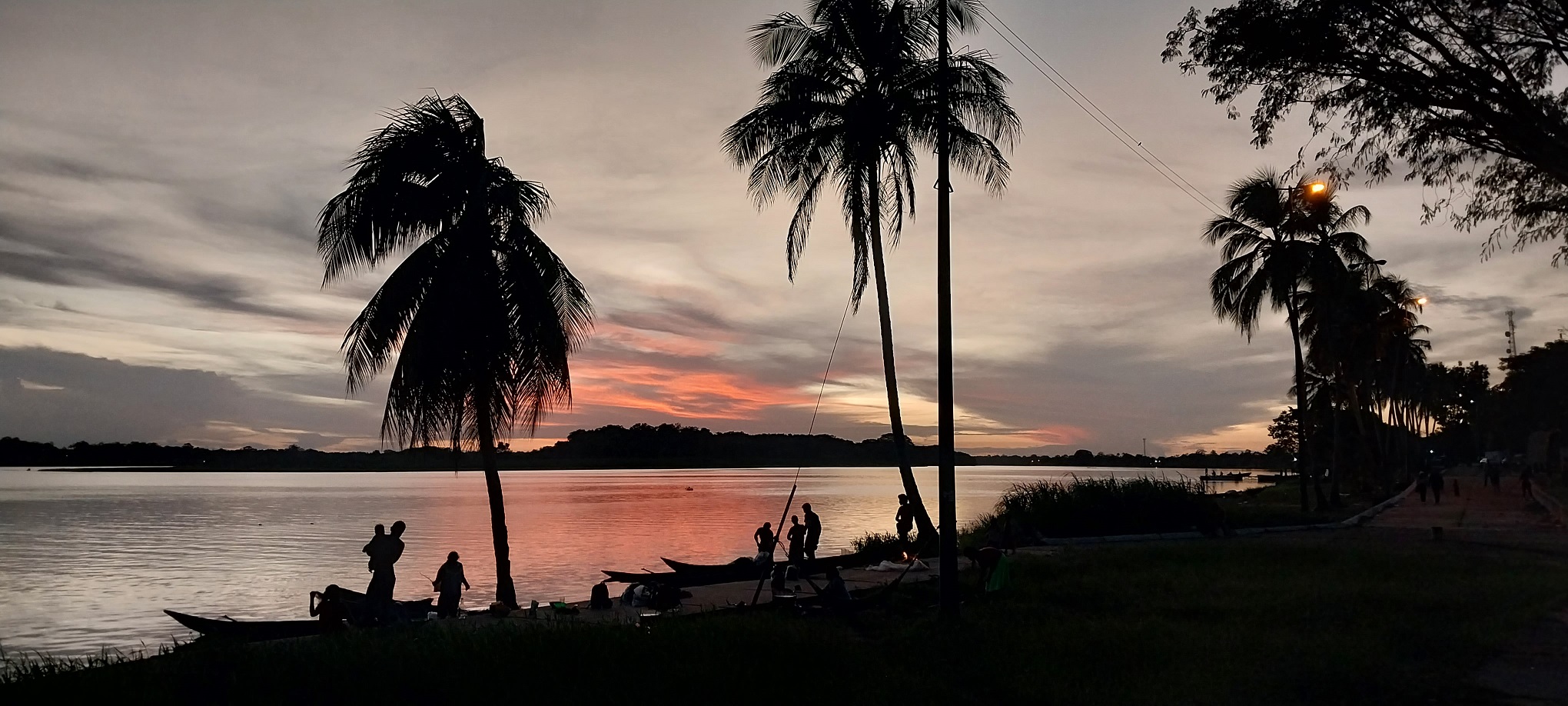Venezuela’s incredible Orinoco river delta
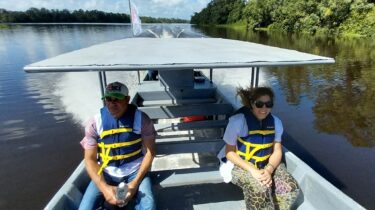
In 2022 I worked with Médecins Sans Frontières (MSF) in the delta of the Rio Orinoco, known locally as the “Delta Amacuro”, supporting local health services. This vast wetland of swamps and jungle on Venezuela’s Atlantic shore is home to the Warao, one of the country’s largest ethnic group.
This blog was published by MSF in May 2023.
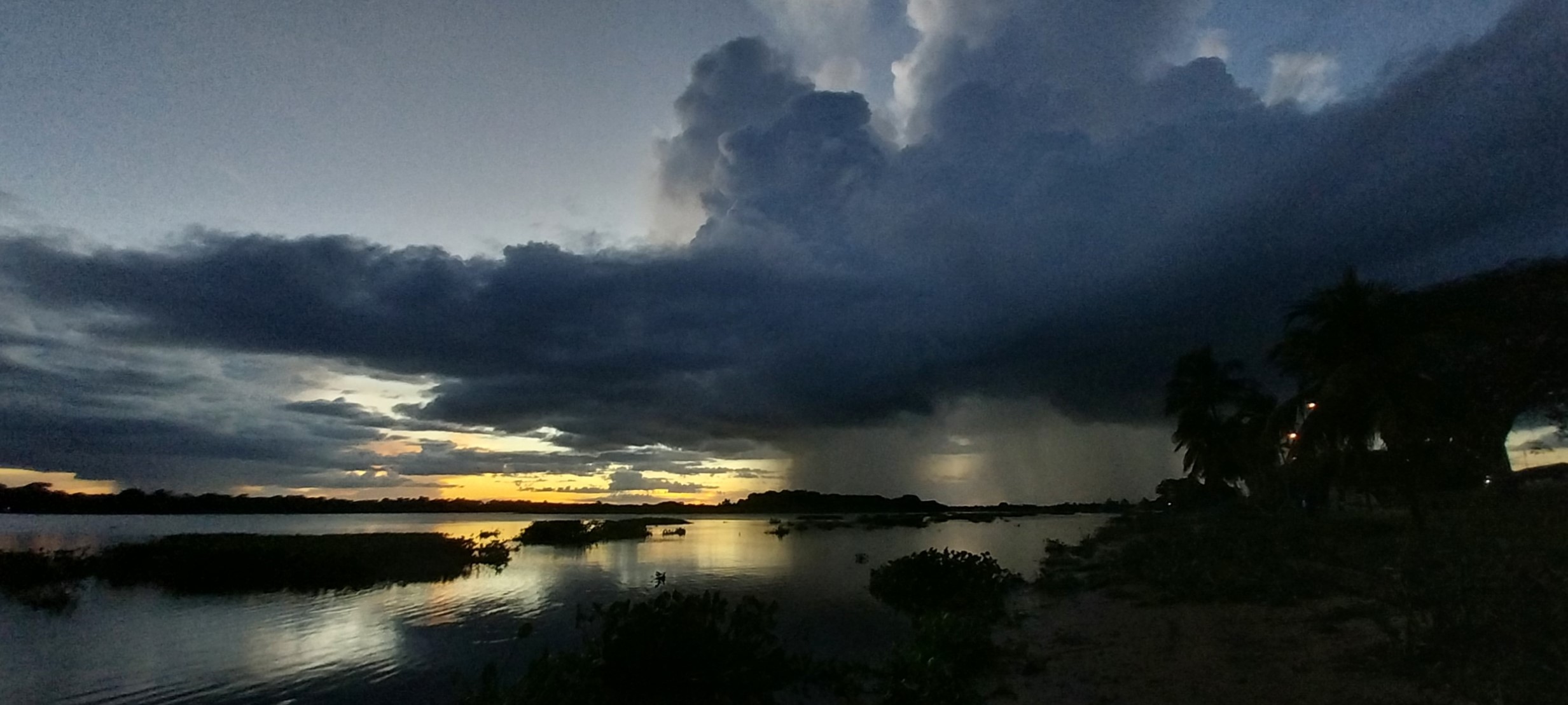
Rounding a bend of the Rio Orinoco, we startle a large river dolphin that leaps high in front of the boat. It hangs there silhouetted against the bright tropical sky, and for a heart-stopping moment seems certain to land back on me.
My mind races as the moment freezes in time. While preparing our medical mission in the Orinoco Delta we’ve researched many hazards: poisonous moths, deadly scorpions, sting rays, electric eels, venomous snakes, anacondas, piranhas.
Add to that flooded rivers with sunken logs, whirlpools, and huge chunks of floating vegetation. Not to mention human factors such as fuel shortages.
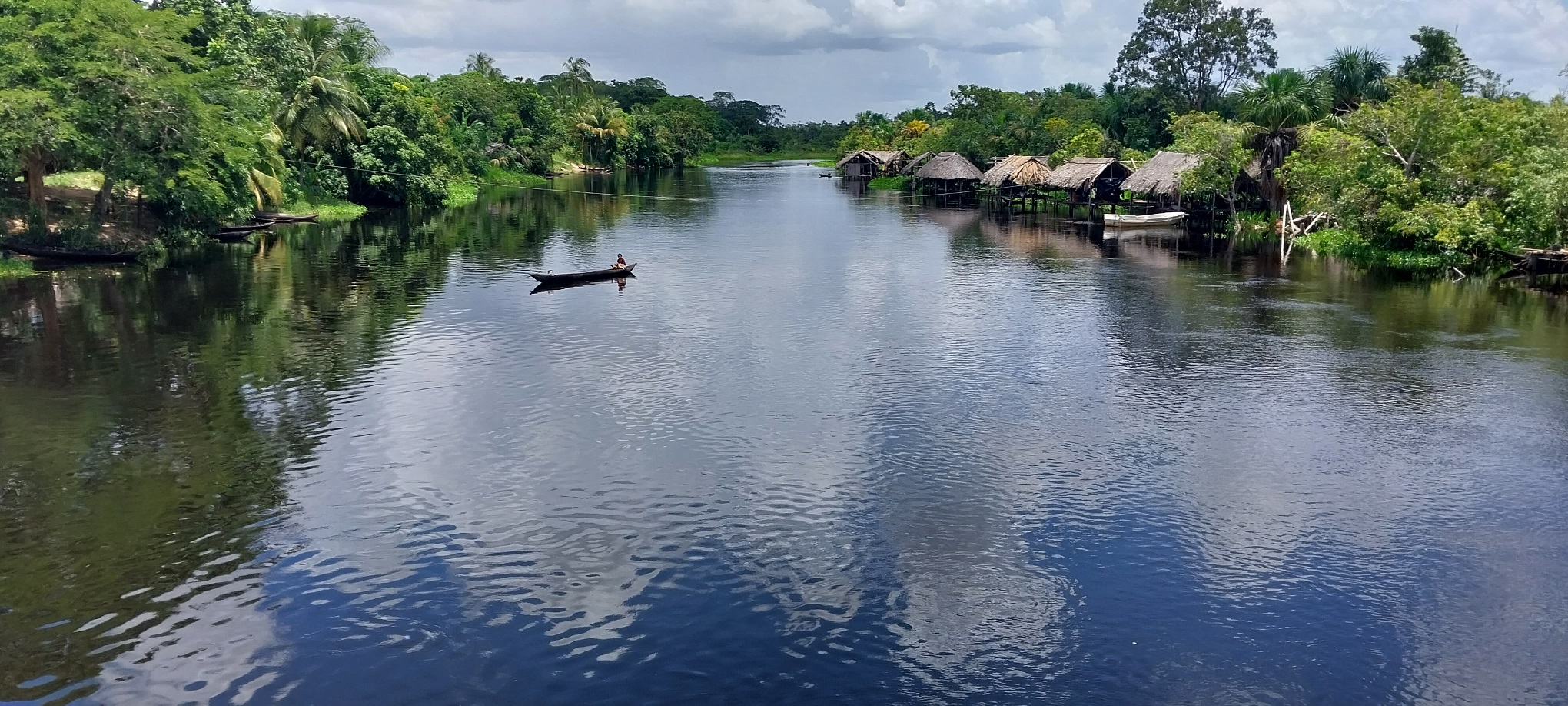
Somehow, flying dolphins never made it into the risk matrix. Now it seems absurd that having mapped out every other conceivable threat, I’m about to be crushed by 120 kilos of marine mammal.
But with split-second timing Juan*, our boat driver, throttles back the two powerful motors. The slight change in pace allows the tonina to plunge back into the grey river just inches off our bow.
“Not today, Flipper,” I say to the river swirl. “That was close,” I yell to Juan. He just grins.
People of the Canoe
Juan is Warao, one of the People of the Canoe, the indigenous inhabitants of the Orinoco outflow, known in Venezuela as the Delta Amacuro, a vast wetland larger than Belgium where one of the world’s mightiest rivers has carved a swampy labyrinth on its last leg to the Atlantic Ocean.
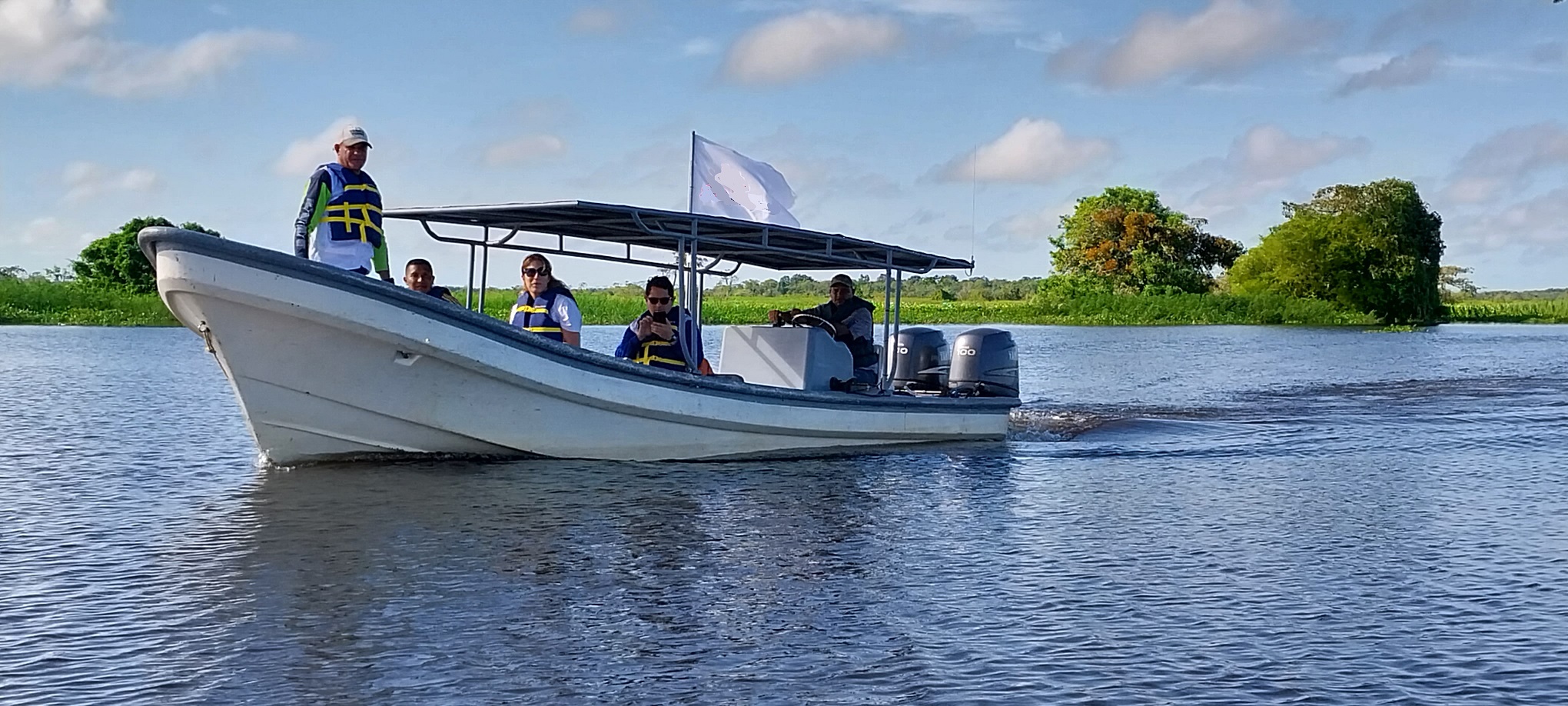
I’m here with Medecins Sans Fronteries (MSF) as part of a team setting up a health project in one of the most remote corners of Venezuela. After a busy month in a temporary base, we’re now driving our two fast boats, medical team and supplies to a distant community, Nabasanuka, where alongside local medics we will spend the week attending hundreds of patients.
As team leader I ride up front in the cargo boat now packed with medical supplies and food for the team. We have lifejackets, torches, food, satellite phones, hammocks, tents, waterproof clothing for the driving rain, even a sharp machete to cut our way through the undergrowth if we get stranded. Nothing for dolphins though.
“Just goes to show you can’t plan for everything…,” someone comments after I recount the marine mammal near-miss.

Life of the edge of a watery world
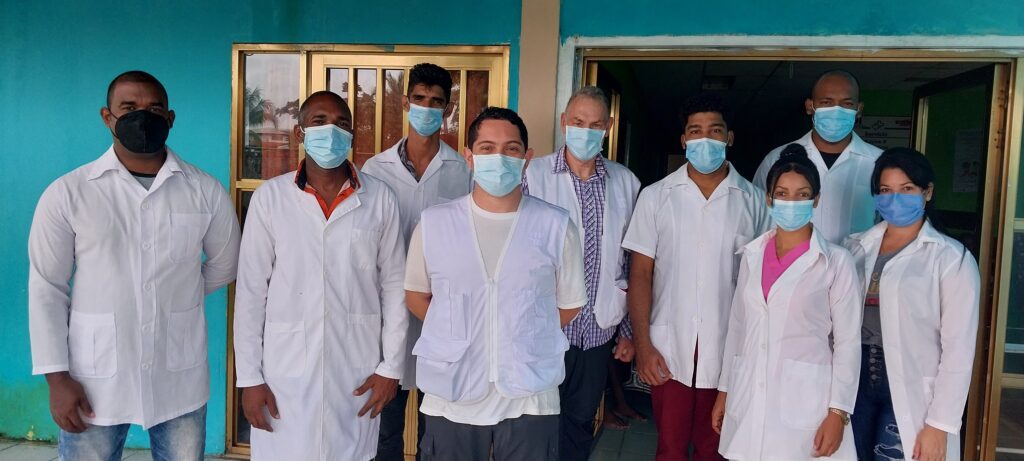
That’s life in the Delta Amacuro where human existence is precariously balanced between competing forces of nature: the mighty Orinoco flow, seasonal floods, green walls of impenetrable jungle and surging Atlantic tides.
Given the natural hazards of the jungle interior – and general lack of dry land – the Warao chose to live at the river edges in stilt houses where they forge a remarkable existence linked to the towering moriche trees.
This “palm of life” provides fruit, flour, drink, dyes, fibre, roofing, and construction materials for the Delta inhabitants, and the Waroa are experts at fashioning every class of implements from fish traps to hammocks to clothes from this one tree.
Despite their remote location along the Atlantic fringe, the Waroa have never been isolationists, have for decades commercialised their considerable fishing skills to enable families to buy essential food and medicines.
But here’ the thing; the Warao have become increasingly cut off as the country’s gasoline supplies have dried up. There’s no fishing, and no commerce, and many families have been forced to sell their last tangible assets, an outboard motor, to buy food. On top of these problems, Delta communities usually do their activities around the river: they cook, they drink and they wash themselves. The river water they rely on is now a major health risk.
For these reasons MSF has had the Delta on its radar for several years, with several exploratory visits and a successful mini-project in 2019 to provide logistical support – vaccine fridges, boats, and fuel – to the local health authorities for a vaccination campaign among the remotest communities.
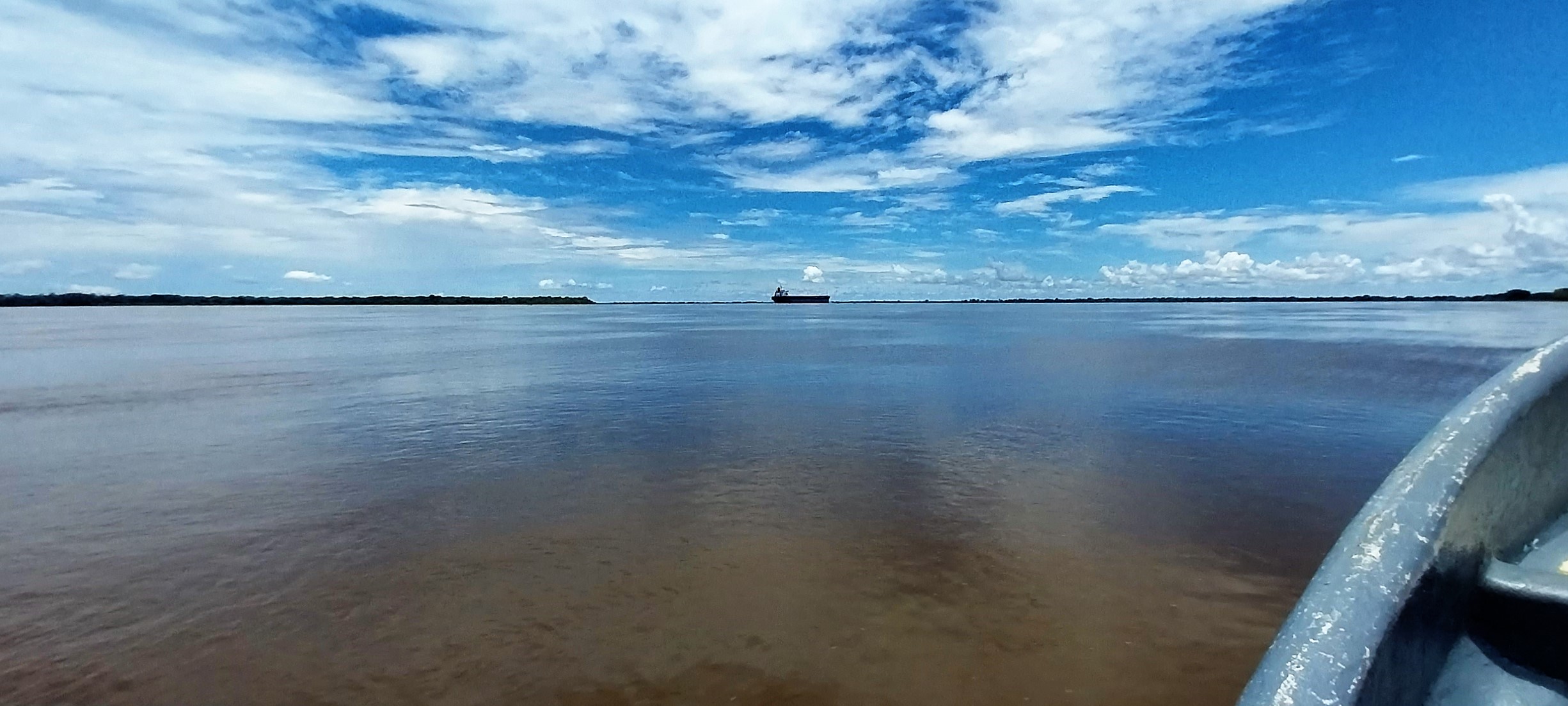
Health needs in isolated communities
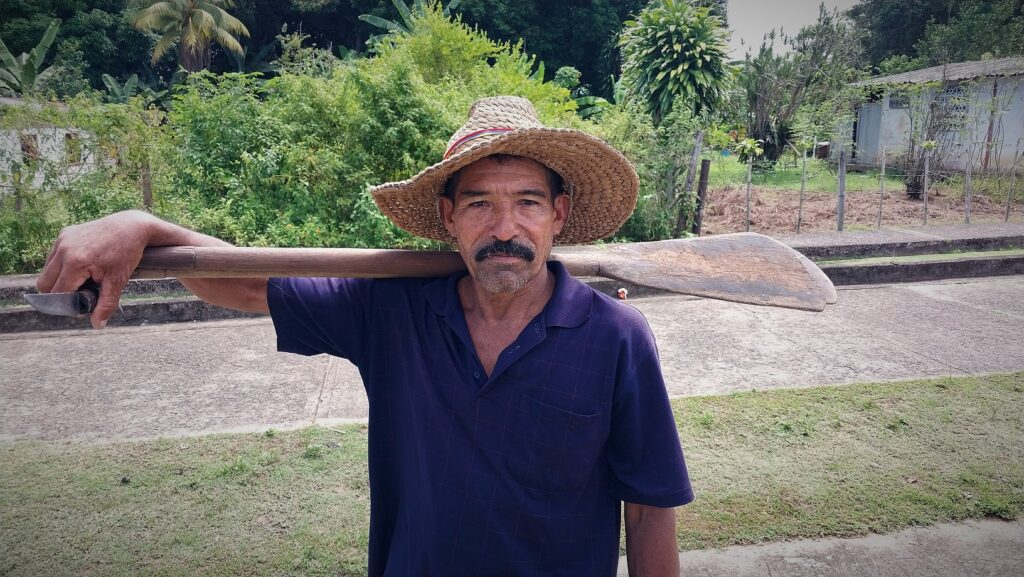
The current problematic comes into sharp relief during a visit to Curiapo, a watery outpost on the Rio Orinoco where houses are built on stilts and people move around town on rickety wooden walkways raised over the swirling brown water.
“We once had a fuel station, busy markets where people travelled from all over to buy and exchange,” explains local fisherman Pedro* as we sit chatting on wooden steps leading to the water where kids swim and duck to escape the heat.
“Now it’s turning into a ghost town”.
Sure enough, Curiapo seems half empty. It’s the main town for Antonio Diaz, one municipality covering 23,000 watery square kilometres of Delta Amacuro and encompassing hundreds of Warao communities plus a rugged mineral-rich mountain range that borders Guyana and where invading miners eek out an existence.
But any hopes that Curiapo could effectively administer this vast territory are quickly dashed.
Despite the best of intentions, transport woes keep public health system workers tied to this small community – a small dot on the map – and they can no longer travel to communities that can hours to reach even in the fastest boat. Even if you had one. And there was fuel.
Anywhere in the Delta can make you feel small, but Curiapo is particularly disconcerting. The town is perched on an island close the Orinoco’s widest stream where fast floating vegetation somehow suggests the earth itself has broken free and is sliding east into the grey Atlantic where it might tumble over the edge of the planet and into endless space.
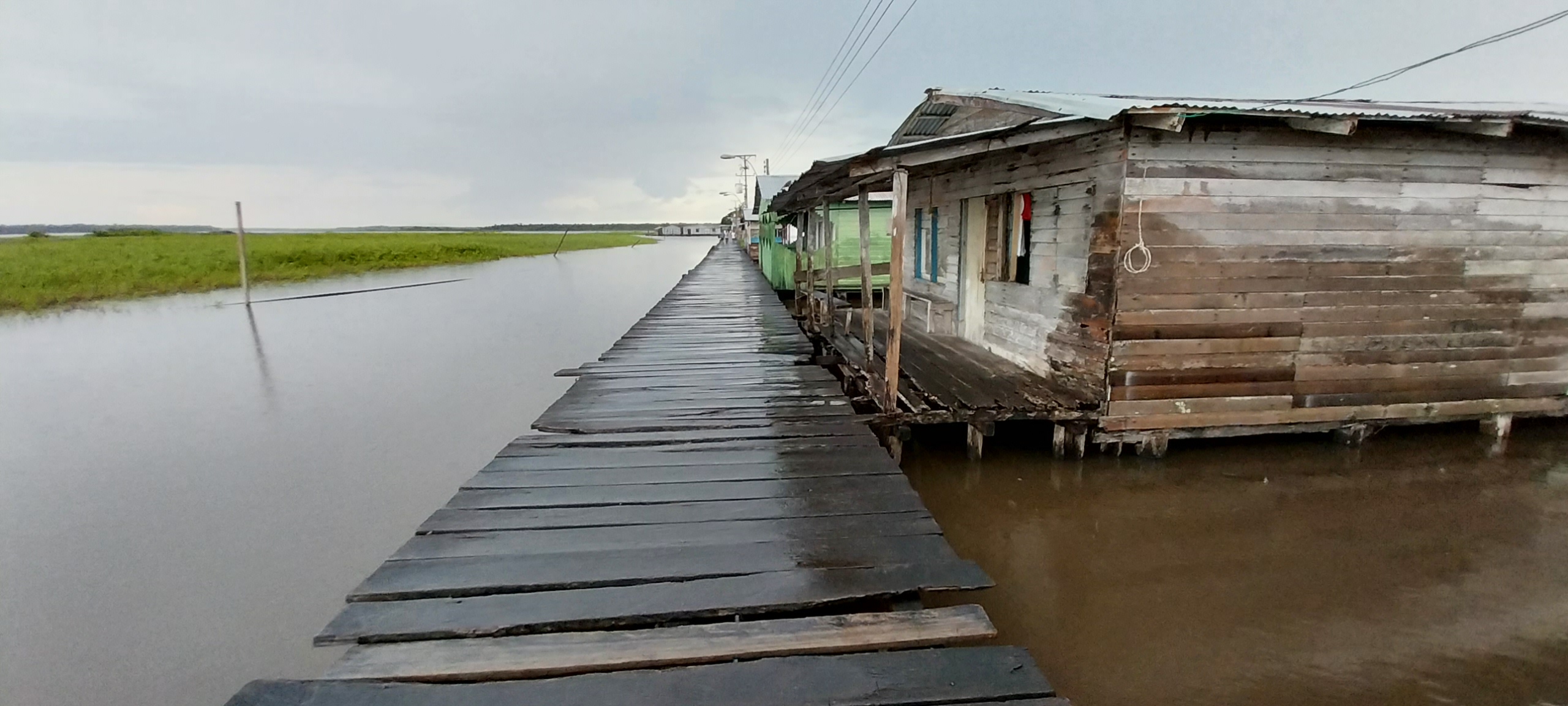
With this in mind, I pick my way over the broken wooden walkways – one misstep could take me into the river below – as parrots screech overhead and chattering yellow-black weaver birds make their nests in waterside tree.
At the end of the walkway is a small army post where the soldiers give the MSF team a warm welcome. There’s talk of fuel coming back to Curiapo’s lonely fuel station, but no-one knows when, or how much it will cost, or if anyone can afford it.
Everything problem here comes down to lack of gasoline. Everyone is back to their curiaras.

Epic journeys to seek help
Many locals now face epic week-long journeys in their small dug-out canoes to find food, medicine, and opportunities.
This then is the Delta’s enduring image: a family of Warao carefully sat in a slight canoe whose sides protrude just inches above the roiling Rio Orinoco, with even the smallest child paddling furiously against the fourth largest discharge of fresh water on the planet.
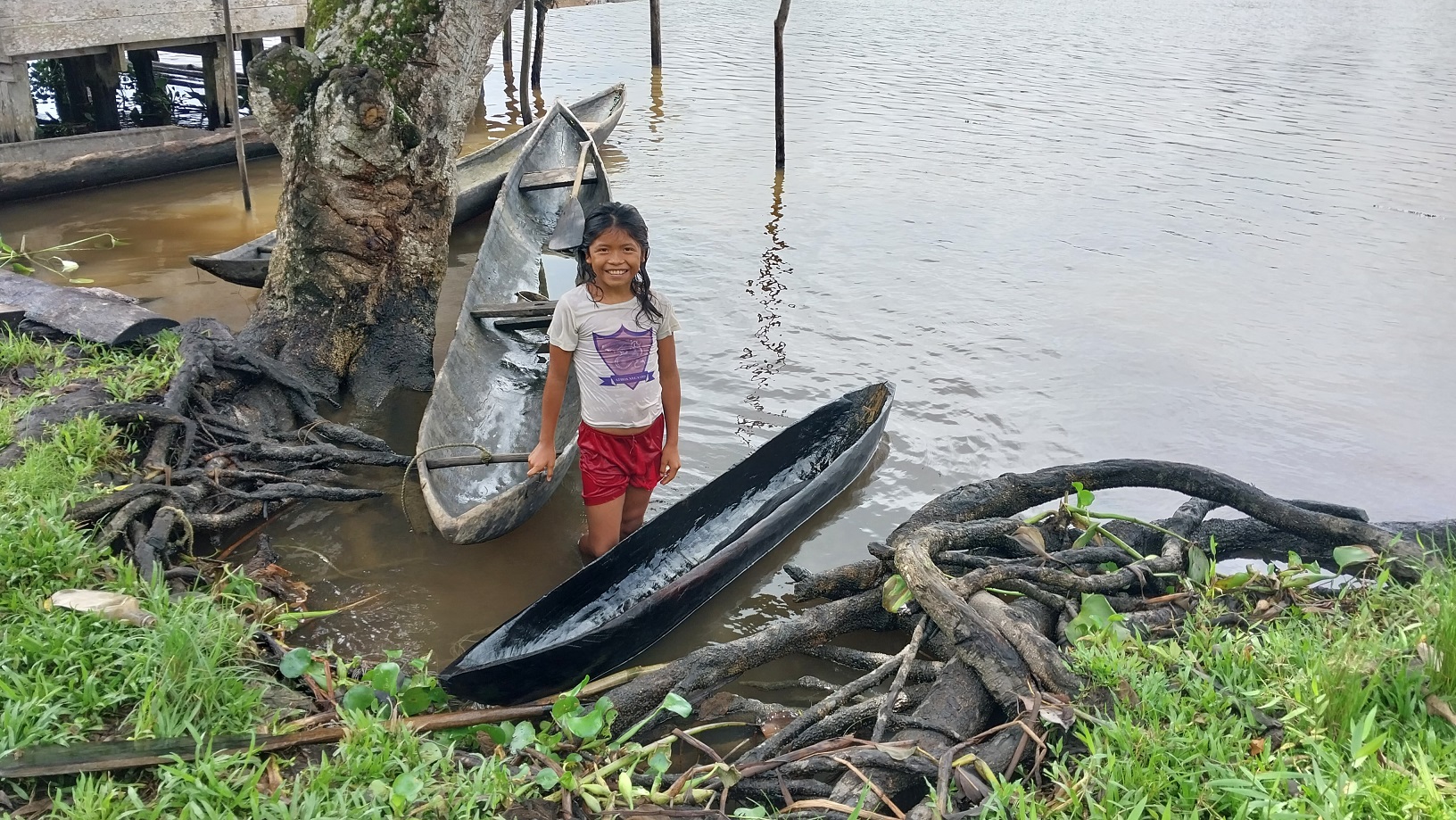

Warao kids can paddle a canoe about the same time they learn to walk. But moving around takes more than canoeing skills: residents of the Delta must also master the strong tides that can reverse the river’s flow or set up dangerous waves and crosscurrents. Ocean winds can help propel canoes upriver if they raise a small triangular sail, but that brings new risks.
“Sailing the canoes is faster but they become unsteady,” explains Pedro in Curiapo. “On my last trip we flipped in mid river and nearly all drowned”.
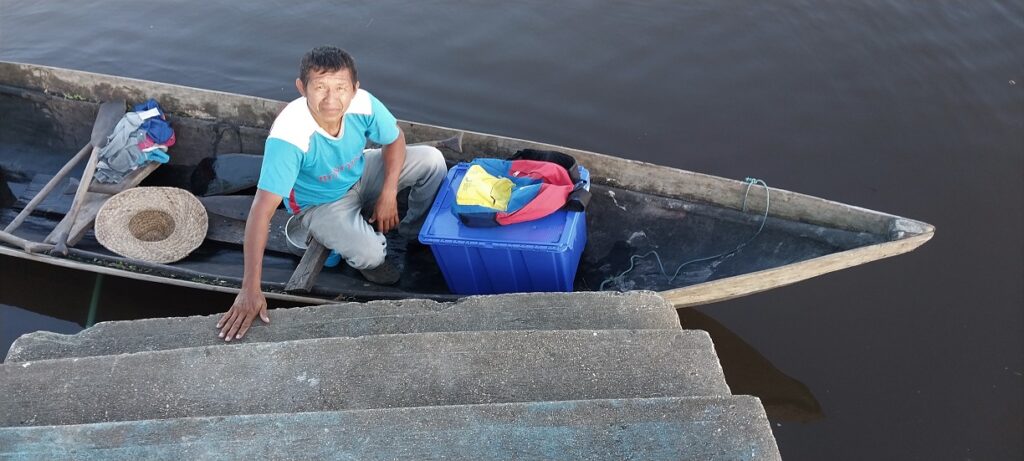
Pedro managed to hold on to a small child – “he was panicking and crying as the river tried to take him away” – while the other crew righted and bailed the canoe.
This story sticks in my head as our MSF team is heading five hours by fast boat through the lower Delta to Nabasanuka, our first medical brigade after a month of planning. Our half-day 200-horse powered trip would take a hand-paddled curaria six days.

Nabasanuka is set on a broad river channel bordered by slat wooden houses set against green moriche forests and is a health hub for communities even further afield. There is a small clinic, one doctor and several nurses, and – occasionally when some finds fuel for a generator – a phone mast that gives patchy Internet connection.

But the services are sparse, medical supply is erratic, and the local medics have no way to reach the outlying communities. This is just our first visit, and we have a lot to learn, but already news has spread by word-of-mouth that MSF is here. Warao arrive in canoes from communities many hours away.
But it’s not easy at all. I end up paddling crazy circles around the caño until a random manoeuvre brings me back to shore.
The clinic is now open and attending a stream of patients for mostly respiratory and gastro-intestinal-related problems. Some sicker patients are put under observation, and some kept overnight during the four-day visit.
I end up helping to fill in forms at the patient registration desk, a bad choice considering my Spanish is far from perfect and my Warao non-existent. It took me a week to learn to say “Na-ba-sa-nu-ka”.
“Where are you from,” I ask someone.
“Janakojobaro,” he says. “Janako-what?” I reply. Eventually, with some help from the clinic nurses, I get it right.
I also note down the number of canoe-hours away. Even that takes some tries, since everyone looks blank when I ask how long they were remando – rowing – to get here. Then I stumble on the right phrase: jalando canalete, literally “pulling the paddle”.
“Winikina. One hour.” “Bonoina. Two hours.” “Kuberuna. Three hours.”

I realise that while our arrival in Nabasanuka has closed the distance gap for medical services, there is still much more Delta out there. MSF will plan outreach activities with its fast boats to bolster health services in even more remote sites.
Here we might find answers to a key question: how many Warao are still here? Other organizations have reported that thousands have fled to neighbouring Guyana and Brazil, others have moved to even more precarious locations in Venezuela, living on the streets or working in illegal mines.
No one knows for sure the population that remains, and how we can best help. We hope to find answers soon.

“The English” further away…
Meanwhile, back at the Nabasanuka clinic, my muddled attempt to write down Warao placenames is causing mild amusement among the waiting patients.
“Where are you from?” someone asks me. It turns out that for the Warao, “the English” are from nearby Trinidad. So now we talk about an England even further away.
I look out of the clinic and across the caño where canoes full of families are still arriving. Beyond that, the channel joins a faster river branch that soon empties into the Atlantic. From the mouth of the Orinoco, it’s a straight run 4,000 nautical miles across a grey ocean to the River Thames in London.
I do some rough maths in my head. “160 days jalando canalete,” I conclude. No-one looks convinced.
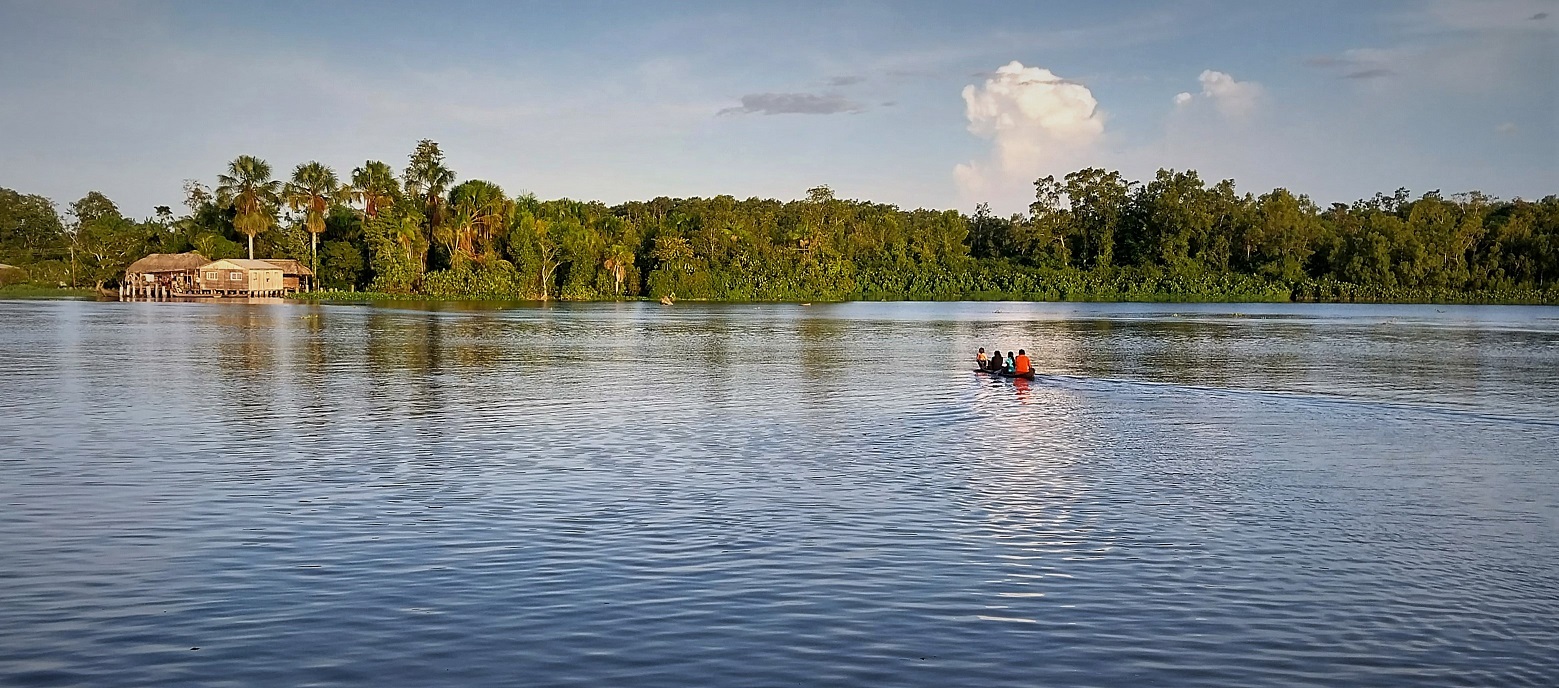
Later, perhaps as a test, some villagers invite the MSF team to paddle a curiara close to the shore. All day I’ve been watching small Warao children propel their canoes in an arrow-straight line along the caño. Surely it must be easy? I say to myself, with characteristic over-confidence.
So well done to the Warao for mastering this watery lifestyle at the edge of the world. And well done to MSF for supporting them, and other Delta communities, at their hour of need.
MSF will stay on in Delta Amacuro. My job is done, I’m heading home.
Sitting on the plane, I feel an overwhelming sense of privilege to have been part of the Orinoco flow with its canoes, sunsets, screeching parrots, howling monkeys, and resilient human inhabitants. And, of course, the dolphins. As long as they stay in the river.
